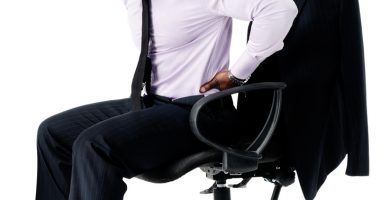Arthritis and Osteopathy
What is arthritis?
Arthritis is a term which is used to describe inflammation of a joint. There are two main categories of arthritis: inflammatory arthritis and degenerative/mechanical arthritis (osteoarthritis). Osteoarthritis (OA) is the most common form of arthritis in the UK.
Each year in the UK 9 million people seek help from their doctor for musculoskeletal problems, 2 million of which will be diagnosed/have Osteoarthritis. OA is a disease which affects the cartilage in the joints. The cartilage gradually thins and roughens, causing joint surfaces to become irregular. The bone at the edge of the joint may grow outwards forming osteophytes. Over time the capsule and ligaments surrounding the joint thicken and shorten.
Several factors play a role in the development of OA. OA becomes more common with increasing age and is also more prevalent in the obese. It is more commonly found in joints which have been repetitively stressed (such as joints of an elite athlete or a builder) and joints which have been damaged or are deformed.
Symptoms of OA include joint tenderness/pain, joint swelling, reduced range of movement/stiffness. In some cases the joint may appear red and/or hot. Instability and crepitus of the joint may also be reported. Pain tends to increase when exercising the joint and at the end of the day. The affected joint is often stiff first thing in the morning (and takes approximately 30 minutes to loosen up) and after long periods of rest. Symptoms fluctuate, with bad or good spells lasting for a few weeks or months. People have reported that their symptoms are affected by changes in the weather (usually made worse by the cold and damp) and how much physical activity they are doing.
There is no cure for OA, however several things can be done to ease the symptoms.
How can Osteopathy help with osteoarthritis?
Your Osteopath will use techniques to: loosen the tissues around the affected joints, help increase ROM, help to increase fluid circulation within the joint and aid drainage to decrease swelling/inflammation. The practitioner will do a head to toe check to make sure the rest of your body is moving well and there is no other factor/s contributing to your symptoms. If your Osteopath feels further intervention maybe necessary they will liaise with your doctor.
Your Osteopath will be able to give you advice on exercises that will help strengthen the muscles around the affected joint and maintain/increase mobility. They can also advise you on how to keep active and fit. They may feel it is necessary to tape/strap the affected joint to provide it with extra support or to help with drainage. Your practitioner may suggest special insoles. Insoles can be very beneficial, as they help distribute your weight more evenly through the feet, preventing uneven forces being transferred up through the lower limb and into the lower back.
How can you help yourself?
The correct diet can certainly help some people with arthritis or rheumatism. If you are overweight and suffer with arthritis, one of the most beneficial things you can do to help yourself is to change the type and amount of food you eat. Being overweight means there is greater forces going through your back, hips, knees, ankles and feet. It is also important to make sure your diet is supplying you with the necessary nutrients including minerals such as iron and calcium. Cut down on sugary and fatty foods and try and eat more wholemeal starchy foods (such as wholemeal bread and brown rice), vegetables and fresh fruit.
Take regular exercise. Exercise helps to strengthen the muscles around the joints and maintain a good range of movement. Non-weight bearing exercise, such as swimming is the most beneficial, but any form of exercise is better than none. Find a form exercise which is suitable for you and does not aggravate your symptoms. It is also important to rest your joints if they are inflamed. Applying ice to the joint can help reduce inflammation. Make sure you wrap the cold pack in a towel to avoid a freeze burn and do not apply it for longer than 10 minutes at a time. You can ice an injury several times a day, but you should allow skin temperature to return to normal between each application. The joints should be used little and often. Long periods of rest can have an adverse affect as the joints have time to stiffen.
There are several nutritional supplements available which have been shown to help with the symptoms of OA. Common ones include: calcium, vitamin D, omega-3, MSM, glucosamine and chondroitin. Tumeric has been found to be effective in reducing osteoarthritic pain according to a study published in the ‘Medical News Today’ in 2010. You should discuss with your dietician/nutritionist or doctor before taking any supplements as you can take too much and they can also interfere with other medication.
References:
http://www.nhs.uk/Conditions/Osteoarthritis
http://www.medicalnewstoday.com/releases/201305.php



